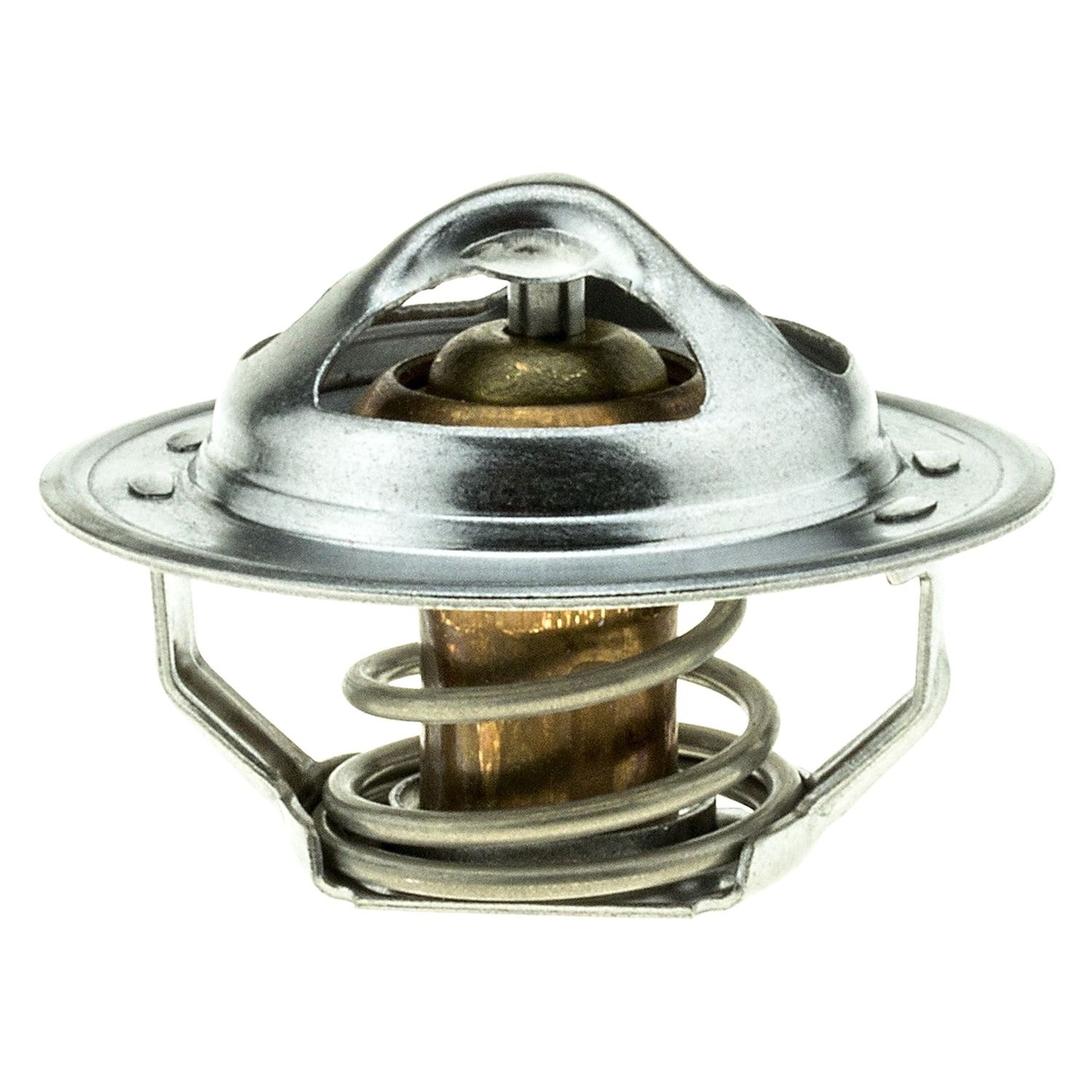

This fluid then returns to the cooling system after the engine cools down. The cap releases pressurized coolant into the coolant overflow tank. The cap typically increases the cooling system pressure by 14 or 15 psi and raises the boiling point about 43 degrees Fahrenheit.

The job of maintaining the pressure in the cooling system belongs to the radiator or pressurized coolant recovery tank cap. However, too much pressure will cause hoses and other components to burst and leak, so a system is needed to relieve pressure if it exceeds a certain point. The cooling system is designed to be pressurized to prevent coolant from boiling. The coolant will continue to circulate like this until the optimal running temperature is achieved, at which point the thermostat will open and allow the coolant back through the radiator to be cooled. If the coolant temperature falls below this temperature, the thermostat blocks the coolant flow to the radiator, forcing the fluid instead through a bypass directly back to the engine. The water pump has the job of keeping the fluid circulating through the system when the engine is running.Ī thermostat is placed between the engine and the radiator to make sure the coolant stays above a certain preset temperature to ensure the engine runs optimally. Once the fluid is cooled, it returns to the engine to absorb more heat. As it flows through the thin tubes in the radiator, the hot liquid is cooled by the air flow entering the engine compartment through the grill in front of the vehicle. The heated coolant then makes its way through a rubber hose to the radiator in the front of the engine compartment. As the coolant flows through these passages, heat is transferred from the engine components to the coolant. The correct coolant mixture and quality will prevent freezing in winter, prevent boiling in summer, prevent rust and corrosion of metal parts, become a good conductor of heat, and aid in preventing electrolysis.Ī cooling system works by circulating liquid coolant through passages in the engine block and cylinder head(s). Green coolant usually lasts two years or 30,000 miles. Many modern vehicles are equipped with extended or long-life coolant which is designed to last up to five years or 150,000 miles. Coolant was developed to overcome the shortcomings of water as a heat transfer fluid. Coolant is a mixture of water, antifreeze, corrosion inhibitors, and lubricants. The higher temperature differential between the engine coolant and outside air makes heat transfer more efficient.The engine cooling system is comprised of engine coolant, passages inside the engine block and cylinder head(s), a water pump to circulate the coolant, a thermostat to control the temperature of the coolant, a radiator to cool the coolant, a fan to pull air through the radiator, a radiator cap to control the pressure in the system, and interconnecting hoses to transfer the coolant from the engine to radiator, and also to the vehicle's heating system where hot coolant is used to warm the cabin of the vehicle.Įngine coolant has a primary function of convective heat transfer for internal combustion engines. The optimum temperature is around 212 degrees Fahrenheit. The engine operating temperature range for most cars is between 195 to 220 degrees Fahrenheit. If the engine temperature gets too hot for too long, the engine will sustain damage. If the engine temperature is too low, fuel economy will suffer and emissions will rise. The cooling system must maintain the engine at a constant temperature whether the outside air temperature is a hot 100 degrees Fahrenheit, or a frigid 30 degrees below zero. The basic cooling system still consists of liquid coolant being circulated through the engine block and cylinder head (or heads in a V-type configured engine) and then forced out to the radiator to be cooled by the flow of air coming through the grille at the front of the vehicle. Modern cooling systems have not changed much from older cooling systems, but they have become a lot more efficient and reliable at doing their job. The engine's cooling system is designed to control and regulate these high temperatures. These explosions produce an extreme amount of heat and will destroy an engine in a matter of minutes if not controlled. This is what propels the vehicle down the road. A typical vehicle with a four-cylinder engine cruising down the highway at 55 miles per hour will produce nearly 5,000 controlled explosions per minute inside the engine as the spark plugs ignite the air and fuel mixture in each of the cylinders.


 0 kommentar(er)
0 kommentar(er)
